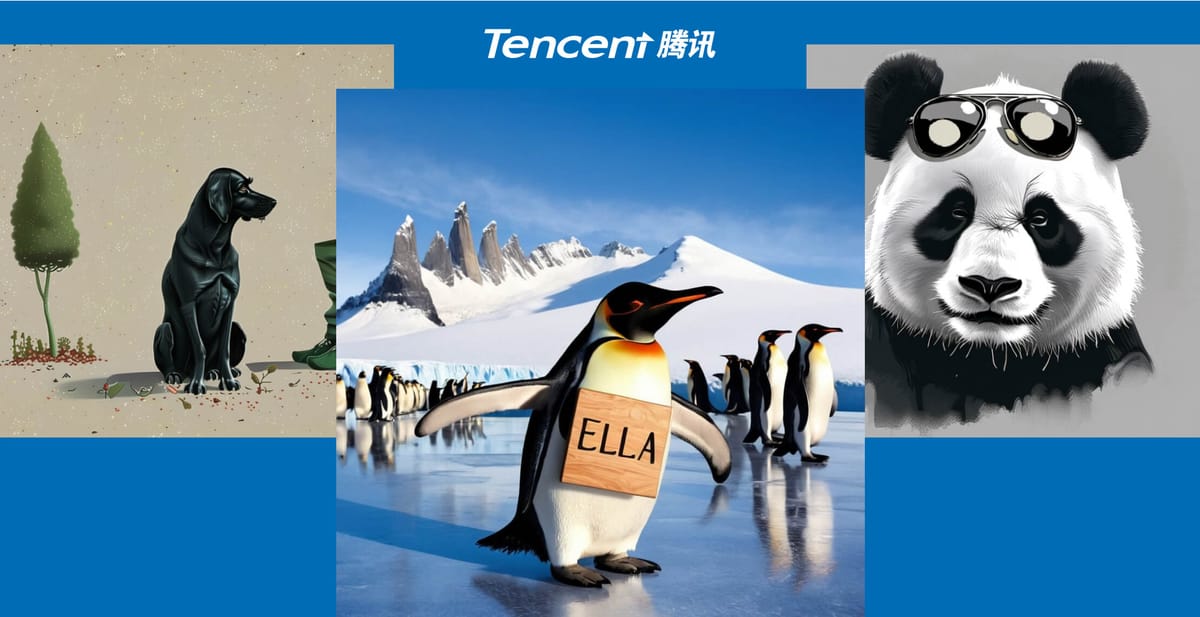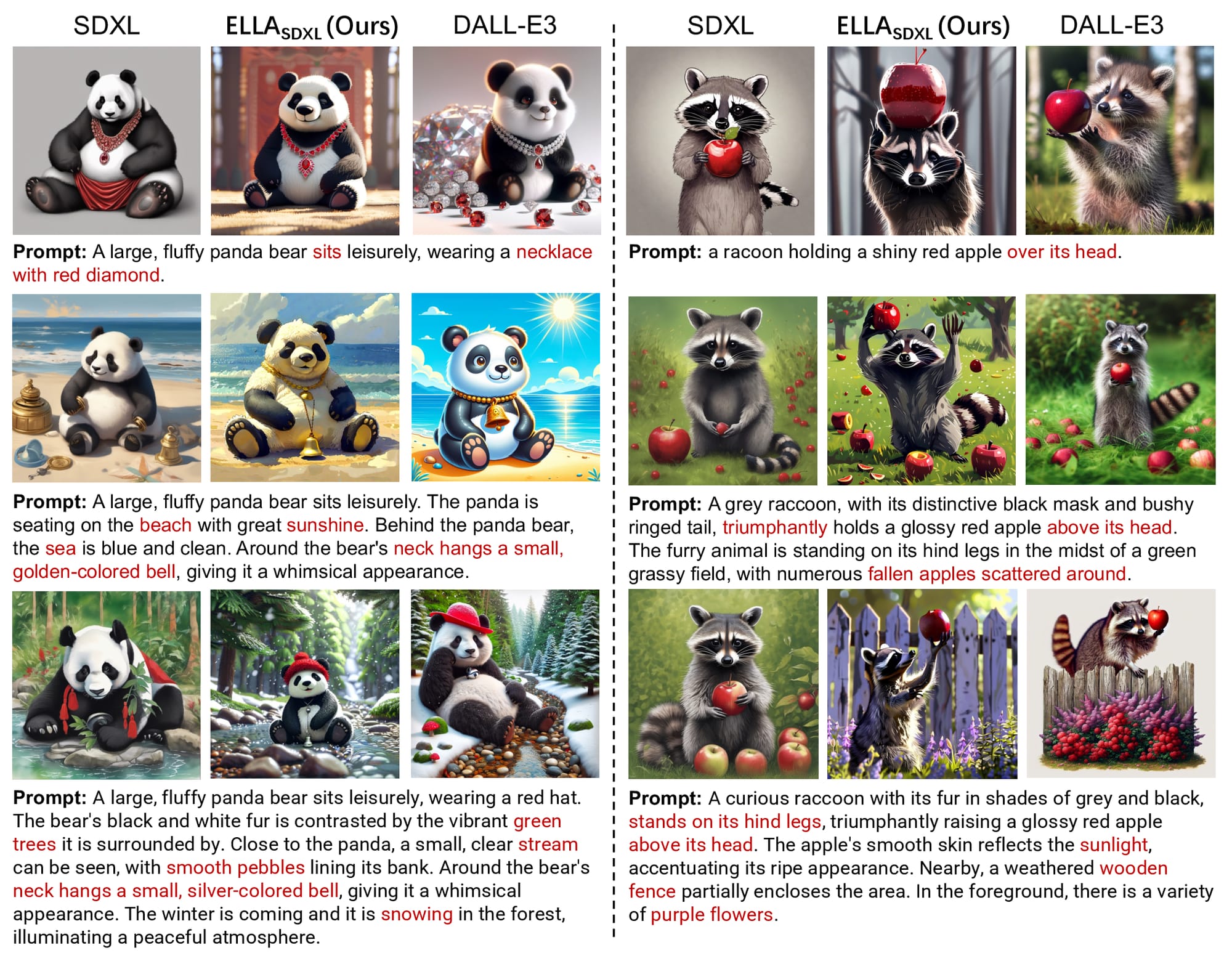
Tencent researchers have introduced a novel approach called ELLA that leverages the capabilities of Large Language Models (LLMs) to significantly improve the text alignment of diffusion-based text-to-image models. By bridging pre-trained LLMs with existing diffusion models, ELLA enables the generation of images that more accurately reflect the content of dense, complex prompts.

One of the key innovations in ELLA is the Timestep-Aware Semantic Connector (TSC). This module dynamically extracts semantic features from the LLM at different stages of the diffusion model's denoising process. By adapting the conditioning based on the timestep, TSC helps the model interpret and adhere to lengthy, intricate prompts throughout the image generation process. This allows ELLA to effectively handle prompts with multiple objects, detailed attributes, and complex relationships - an area where previous diffusion models that rely on CLIP encoders often struggle.

Another notable aspect of ELLA is its efficiency and versatility. The approach does not require retraining of either the LLM or the diffusion model's U-Net component. This makes it straightforward to integrate ELLA with existing community models and downstream tools, providing an immediate boost to their prompt-following capabilities. Researchers and practitioners can leverage the power of large language models without the computational burden of full retraining.
To rigorously evaluate the performance of text-to-image models on dense prompts, the Tencent team also introduced the Dense Prompt Graph Benchmark (DPG-Bench). This challenging benchmark consists of 1,000 complex prompts that stress-test a model's ability to handle diverse objects, attributes, and relationships. In experiments on DPG-Bench, ELLA demonstrated superior dense prompt following compared to state-of-the-art methods.
The development of ELLA is an important step forward in harnessing the semantic understanding of large language models for text-to-image generation. By enabling diffusion models to more faithfully visualize the content of natural language prompts, this approach opens up exciting possibilities for creative applications and beyond. As the Tencent team continues to refine and build upon this work, ELLA has the potential to become a valuable tool in the rapidly advancing field of AI-driven content creation.

